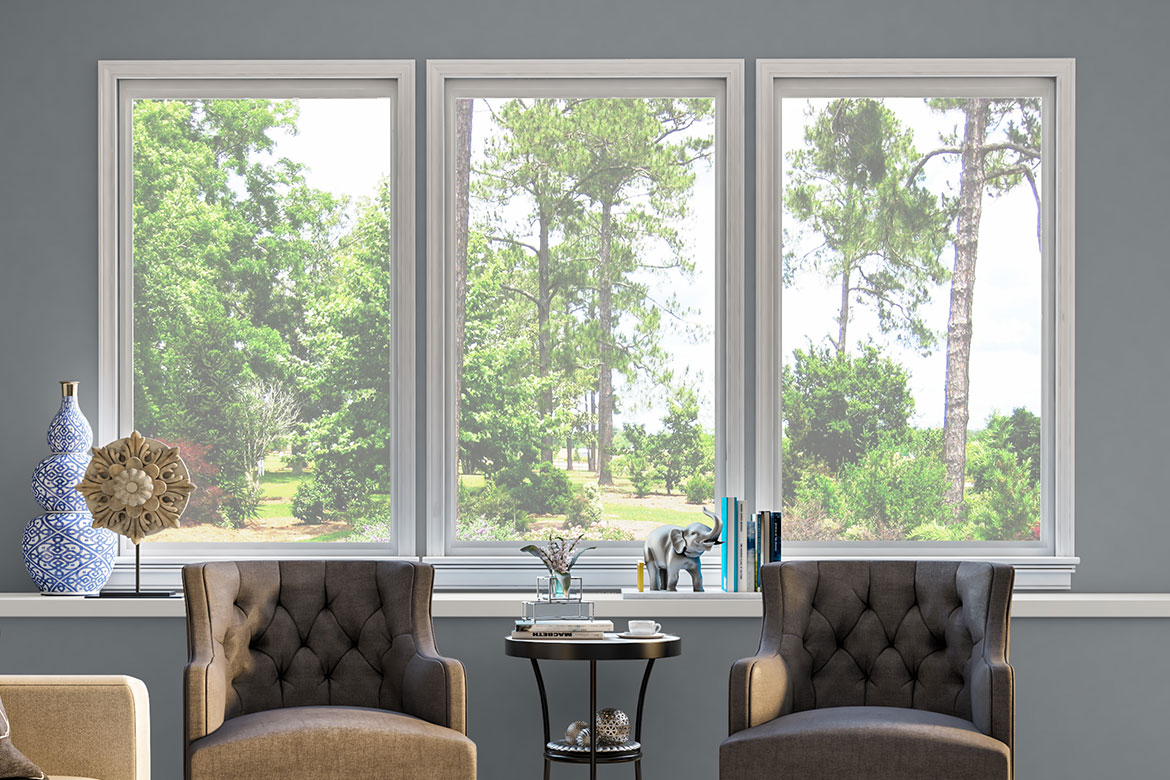When selecting windows, there are many things to consider. With multiple window styles available, it is not always easy to tell them apart. Consider this a guide to understanding and selecting windows for a home. Learn some of the primary window styles and what makes them different from one another.
Related: Understanding Home Styles
Casement Windows
A casement window swings open like a door. This style of window hinges on the side. Casement windows are known for providing excellent ventilation to kitchens and other rooms in the home. Unlike a single hung window, a casement window has no center rail to obstruct the view outside. Casement windows can be used alone or as part of a more massive installment along with picture (non-opening) windows. A casement window is ideal for spaces in the home where pushing a window sash upwards is not always easy to reach. Many homeowners install casement windows above their kitchen sinks. Casement windows are often considered one of the most energy-efficient window types. The sash of a casement window creates an airtight seal against the frame when closed, making it hard for air to escape.
Awning Windows
An awning window (sometimes referred to as a project-out window) is a top hinged outward opening window. Awning windows protect the window opening like an awning. This feature allows awning windows to provide ventilation even during the rainiest of weather. Awning windows are suitable in nearly every style of home and frequently used in bathrooms with obscure or textured glass to provide privacy. Awning windows are an option for most areas of a house that require an operable window. An awning window can be placed higher on a wall than most openable windows and can even be installed over furniture or benches while still allowing access to operate the window. This feature makes awning windows a practical choice for kitchens and bathrooms. Like casement windows, an awning window is suitable for nearly every style of home and is frequently used in bathrooms with obscure or textured glass to create privacy. Awning windows can also be locked in an open position. This characteristic makes them an excellent window choice for homeowners that want to let in ventilation but not want to compromise the security of their home.
Related: 2020 Coastal Design Trends
Picture Window
Picture windows, sometimes called fixed windows, are typically used for larger openings. Homes that utilize picture windows do not require a window that opens and enjoy uninterrupted, expansive views. Because of their oversized nature, a picture window brings in more daylight into homes. Picture windows usually require less maintenance since there are no mechanical parts associated with this window type. An excellent choice for framing outdoor views from living rooms, dining rooms, master bedrooms, and where ventilation is not a concern, picture windows are often an essential part of architectural design. A picture window is diverse in its sizes and shapes. Many manufacturers often refer to these types of picture windows as architectural. Some examples include:
- Half Circle Picture Window
- Arch Top or Eyebrow Picture Window
- Full Circle Picture Window
- Octagon Picture Window
- Hexagon Picture Window
- Chord Picture Window
- Tombstone Picture Window
- Trapezoid Picture Window
- Pentagon Picture Window
- Gothic Pentagon Picture Window
Related: How Impact Windows Work Overtime
Single Hung Window
A single hung window is a traditional style sash (a sash is the part of a window that moves and holds glass panes together) operable window that opens without any interior or exterior space required. A single hung window is often the standard window type used in newer home construction and condominium buildings. This style of window is a perfect choice for most rooms of a home. A single hung window has a bottom panel, or sash, that moves vertically, while the upper sash remains stationary. When opened, the bottom sash obstructs, at least partially, the top sash. Single hung windows are considered one of the more cost-efficient, which makes them one of the most popular window types in homes. Also, a single hung window is energy-efficient since it has only one movable sash, there is less opportunity for air infiltration as the window ages.
Related: Benefits of New Windows and Doors
Horizontal Sliding Window
Horizontal sliding windows, commonly referred to as a sliding window, traditionally includes panels within the window that slide side-to-side, similar to a horizontal sliding door. The sash slides open left or right, which is perfect for satisfying bedroom egress requirements. Horizontal sliding windows are a popular style for contemporary and modern homes. A horizontal sliding window is typically wider than it is tall. This feature makes a horizontal sliding window ideal for wide openings and expansive views. For example, a large sliding window can offer more of an unobstructed view of the outdoors since it showcases a broader landscape view. Horizontal sliding windows also provide an abundance of air ventilation because they are typically larger in size, a sliding window also tends to open wider than other window types. Some people find a horizontal sliding window is less complicated to open and close than a crank-style window. Also, since they open and close without protruding, horizontal sliders are an excellent choice for rooms facing patios, walkways, porches, or other areas that receive high foot traffic.
Understanding window styles, how they function, and their benefits can assist when making new or replacement window decisions. CGI offers a variety of window types to meet the needs of most homes.




